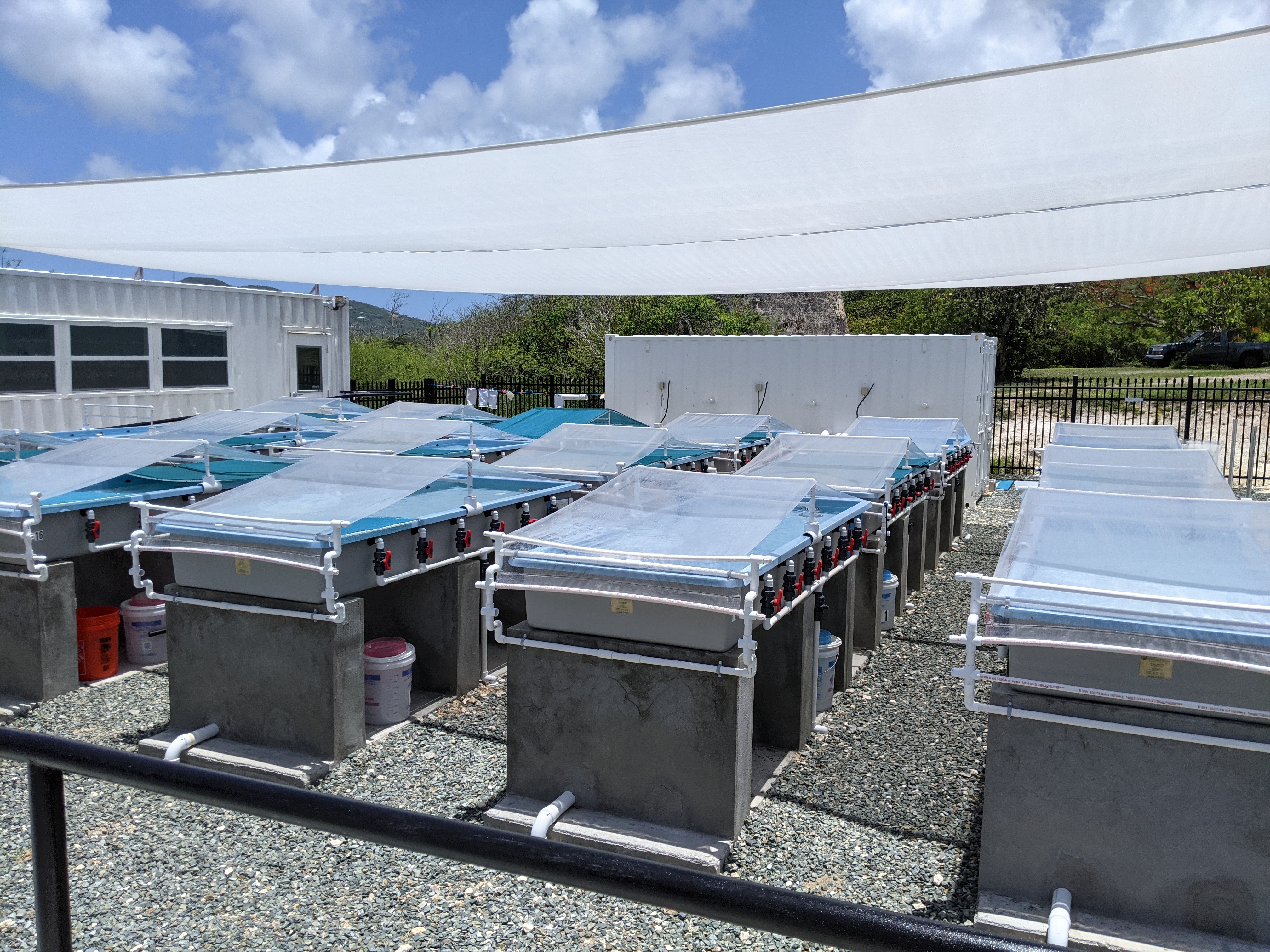
Pictured above: The Nature Conservancy’s land-based coral nursery in St. Croix, USVI
Adaptive genetic variants to improve fitness of coral outplants
Sexual propogation is an opportunity to enhance the adaptive potential of restored populations. During the annual coral spawning event, we conducted reciprocal crosses to produce new genetic variation and explore heritability of environmental adaptations. By evaluating fitness of coral larvae, recruits, and adult colonies in common gardens and transplant experiments in the field, I aim to identify parental genotypes for producing a new generation of corals with the best chances of survival.
.jpg)
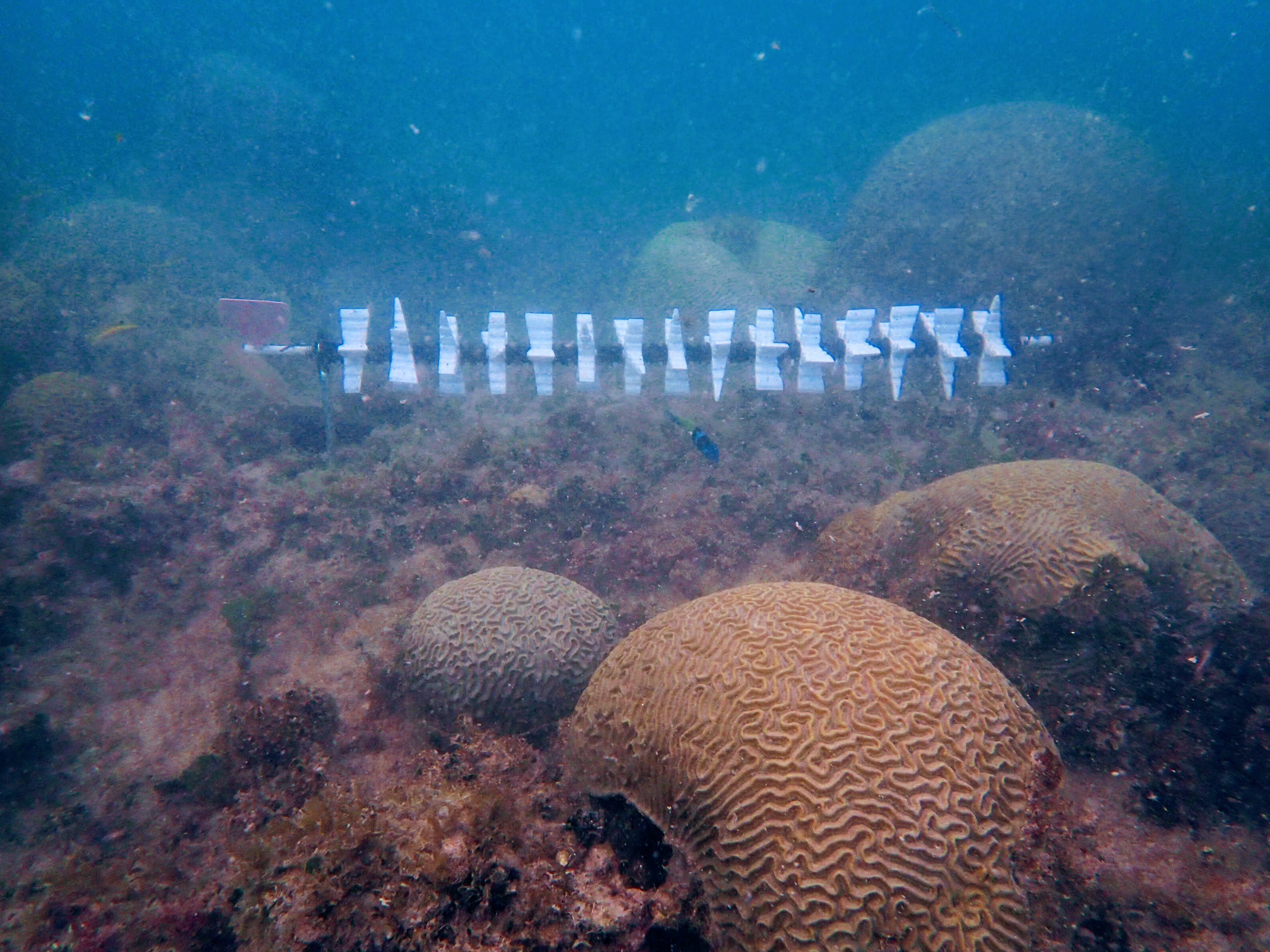
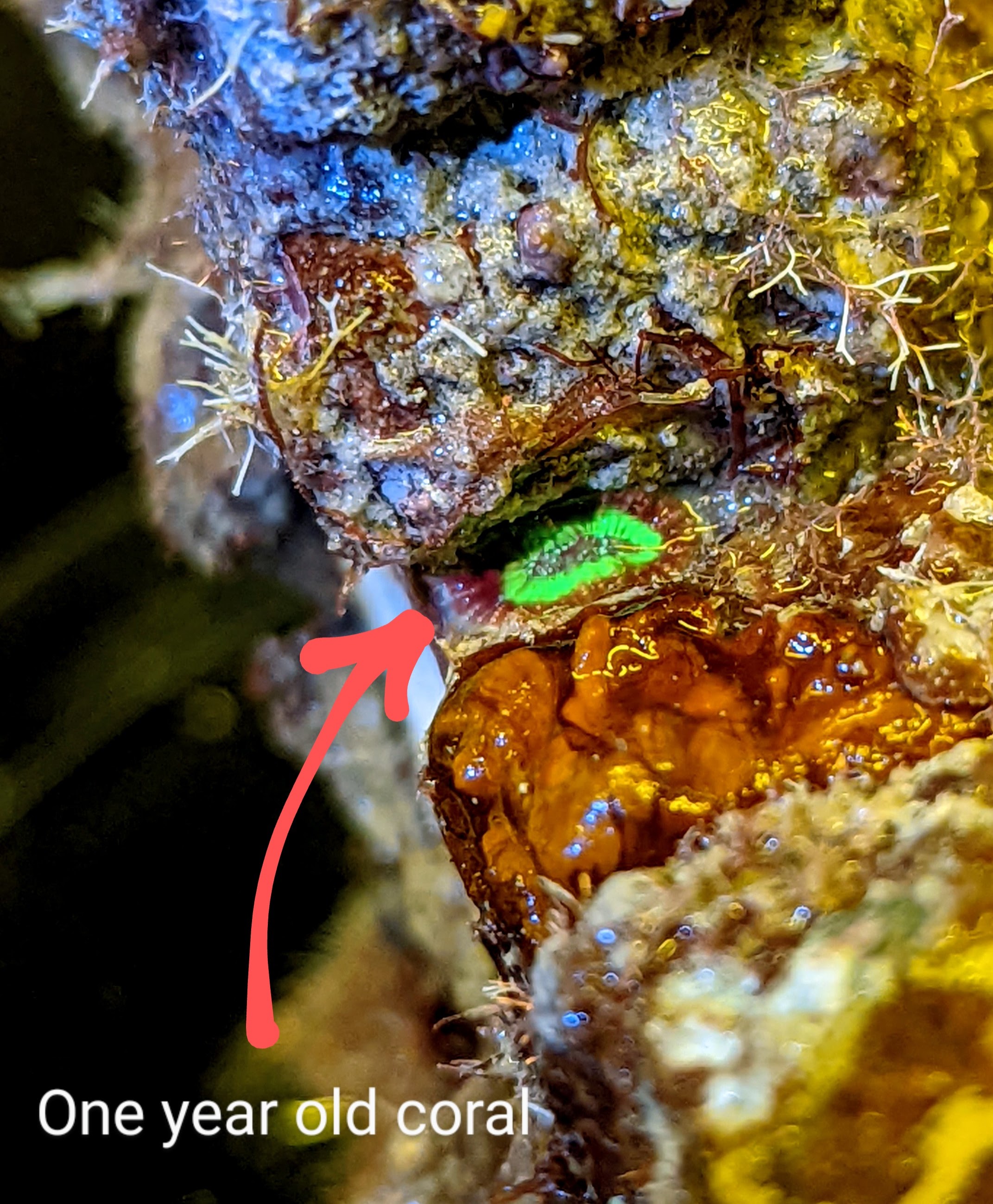
Pictured above: (Left) Newly settled coral recruits on artificial substrate. (Middle) Multiple substrates on a rod, each containing multiple coral recruits, outplanted to the reef to undergo selection in the field. (Right) A coral recruit surviving on an overgrown substrate, retrieved after one year in the field. Survivors such as these provide genetic insights to adaptations that can improve fitness of coral outplants.
This work is funded by The Nature Conservancy in the U.S. Virgin Islands
Finding genes for thermal regulation
Thermally induced coral bleaching is a major cause of reef decline in the Great Barrier Reef of Australia. However, the diversity of reef environments could already be a source of thermally adaptive genetic variants. I am exploring genes under selection across a latitudinal gradient in the Great Barrier Reef to identify genes that may be important for thermal regulation in corals. I am also evaluating the importance of putatively adaptive genes through changes in gene expression from a reciprocal transplant experiment across latitudes.
This work is now published in Molecular Ecology.
Broader impacts
Using adaptive variants in sexual propogation of corals (aka “assisted gene flow”), we can facilitate evolution to global change. The direct outcomes of these projects will support restoration efforts by identifying the optimal parental genotypes for coral breeding and outplanting.
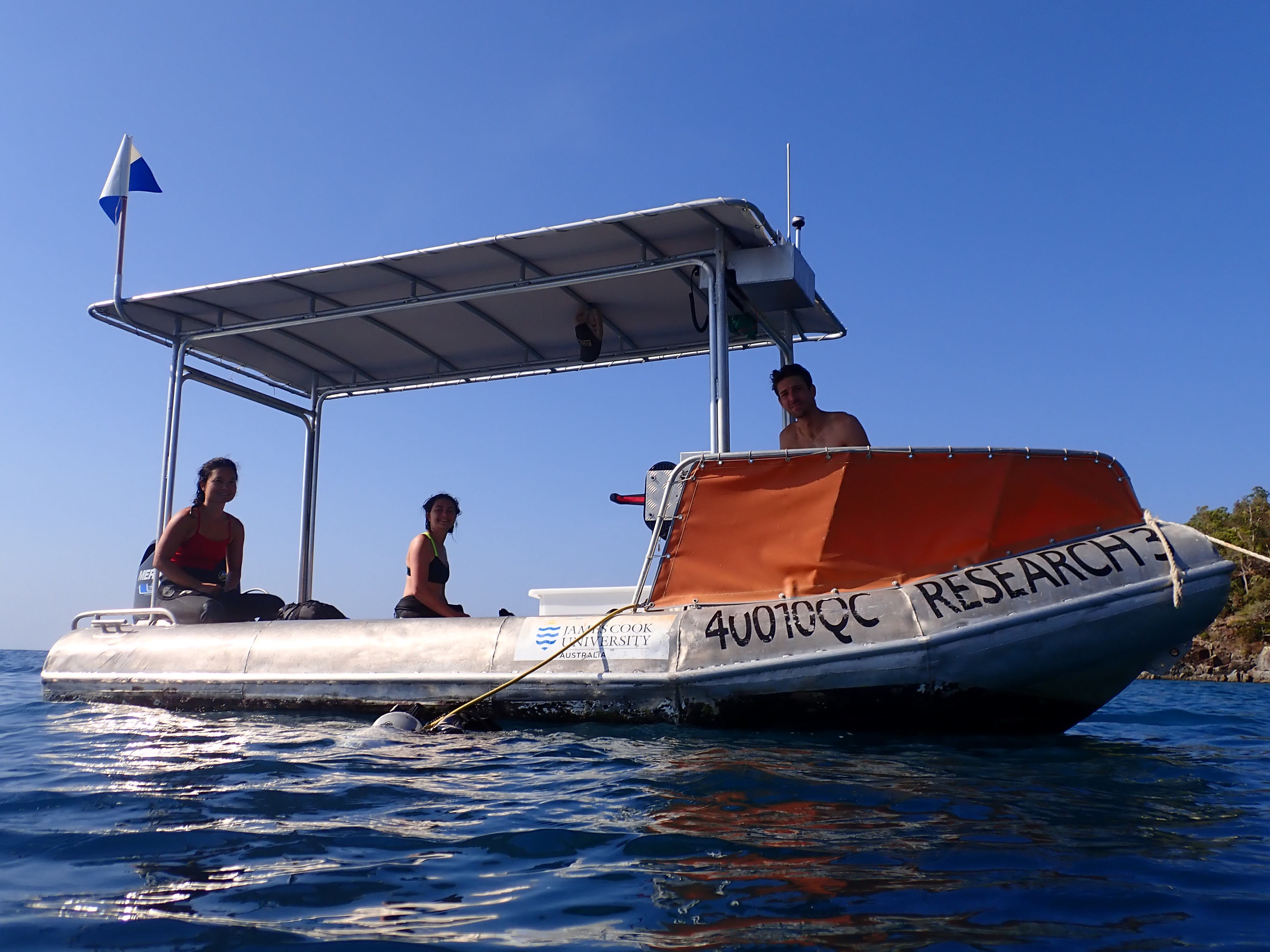
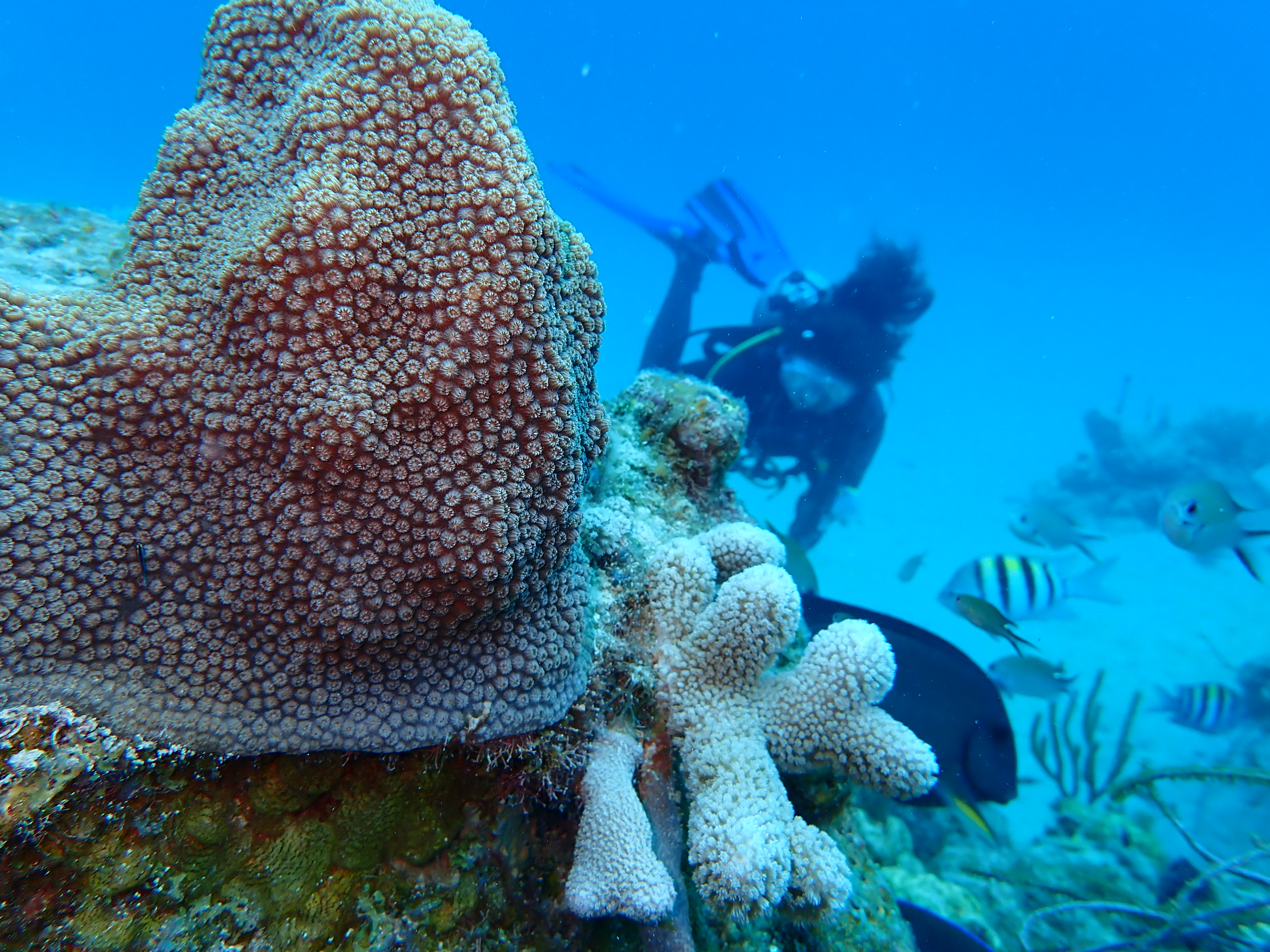
Photo 1: Field work at Orpheus Island Research Station in Australia, Photo 2: Fieldwork at Cane Bay in St. Croix, USVI